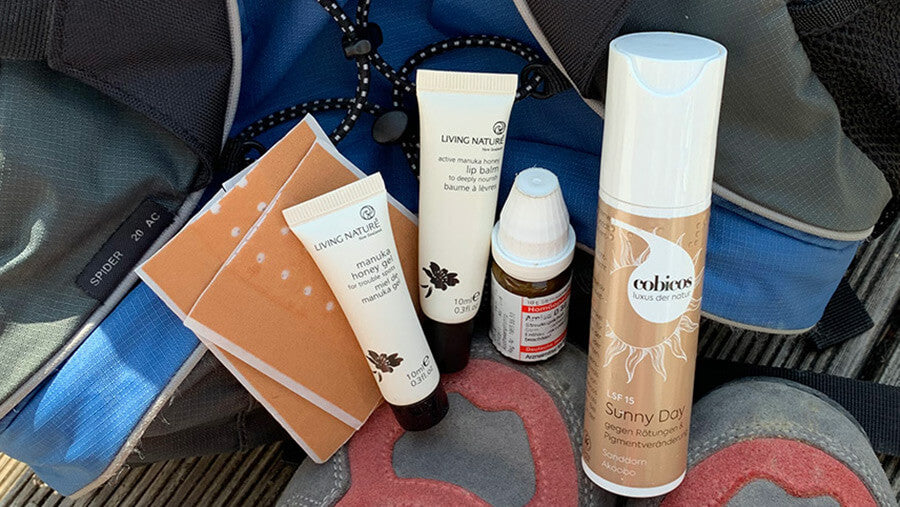With additional stress on feet, hands and buttocks that athletes are exposed to, the question arises: "Do I need additional care?"
Of course, the longer excursions and sporting activities last, the more likely it is that a sore spot, calluses or scrapes will plague you. Does it then have to be a new product or can I also maintain the existing one? My answer is very simple: Of course!
Natural balms and oils keep the skin soft: good for cycling, climbing, rowing or playing tennis
Cycling fans certainly know what it means when you sit on the saddle for a long stage or even for several days in a row. To care for the delicate skin on the buttocks, you can use a water-free balm, such as Living Nature's creamy lip balm in a tube, pure shea butter, or a rich body butter such as Ultra Rich Bodycream . Other care options include high-quality olive oil, moringa seed oil or calendula oil. The softer and more supple the skin and the better a protective film of fat, the better the skin is protected.
In my opinion, ointments with a high glycerin content and synthetic fats are unsuitable, as they lie on the skin and, in the event of it becoming sore, also penetrate it. These balms are also very good for calluses on the palms of the hands, which can occur when playing tennis, rowing or climbing.
Regenerating and antibacterial agents help hikers
Hikers need to protect their heels and toes in particular. Before a longer tour, it is advisable to plane off too much callus, keep your toenails short and always take good care of your feet. If you tend to sweaty feet, you can also apply cream deodorants with natural active ingredients to the soles of your feet, such as the cobicos "Fresh Day" deodorant roll-on or the mild manuka oil - it contains valuable nourishing and regenerating oils and at the same time the antibacterial manuka oil. Both products keep unwanted bacteria at bay. The right footwear is essential, but having a blister plaster in your luggage certainly doesn't hurt.
Sun protection for water and outdoor sports enthusiasts
Above all, water sports enthusiasts need good, mineral and, at best, waterproof sun protection and a regenerating after-sun product. Here, too, I love the Ultra Rich Body Cream from Living Nature because it absorbs very quickly and well and leaves the skin feeling soft, supple and regenerated.
However, I am of the opinion that you should not resort to "Total Protecting" or "UV protection 50+". And for several reasons: the high protection factors prevent you from getting sunburned. However, UV radiation, which causes skin cancer, puts a strain on the skin. Also, the higher the level of protection, the more harmful substances you put on your skin, harming yourself and the environment - especially the water and coral. And then the skin needs a certain amount of sunlight for the formation of vitamin D. That's why my motto is always to reduce exposure to the blazing sun to a healthy level. Water sports enthusiasts should wear UV protection clothing or a wetsuit. The beach walk is best done with light, light-colored clothing and a sunscreen for the head.
My favorite for daily care in summer and for sports is the cobicos Sunny Day SPF 15.

According to a laboratory test, it has a sun protection rating of 16.2. My experience and that of our customers is that the cream also protects against sunburn on summer holidays and in the mountains. It is probably due to the ingredients Akoobo and sea buckthorn pulp oil. They offer strong antioxidant protection, which, however, cannot be measured in the classic test methods for sunscreens. The skin has its own protective potential - the boosting of melanin production, that is, the tanning of the skin. Therefore, moderate tanning makes sense - but "barbecuing" in the blazing sun is very harmful.
Natural wound care
If the skin is scratched or cracked, I use the manuka gel or the pure manuka honey with MGO100 . The gel is practical because it can be applied over a large area and forms a very light film on the skin. Large areas are difficult with honey. That's why he's more likely to get on the small open spots and then put a plaster over them.
So, all in all, I get by with very few products, have less luggage and a manageable number of products in the bathroom.


Leave a comment